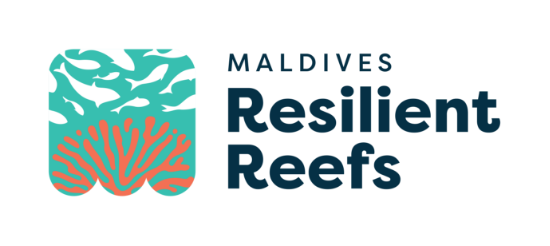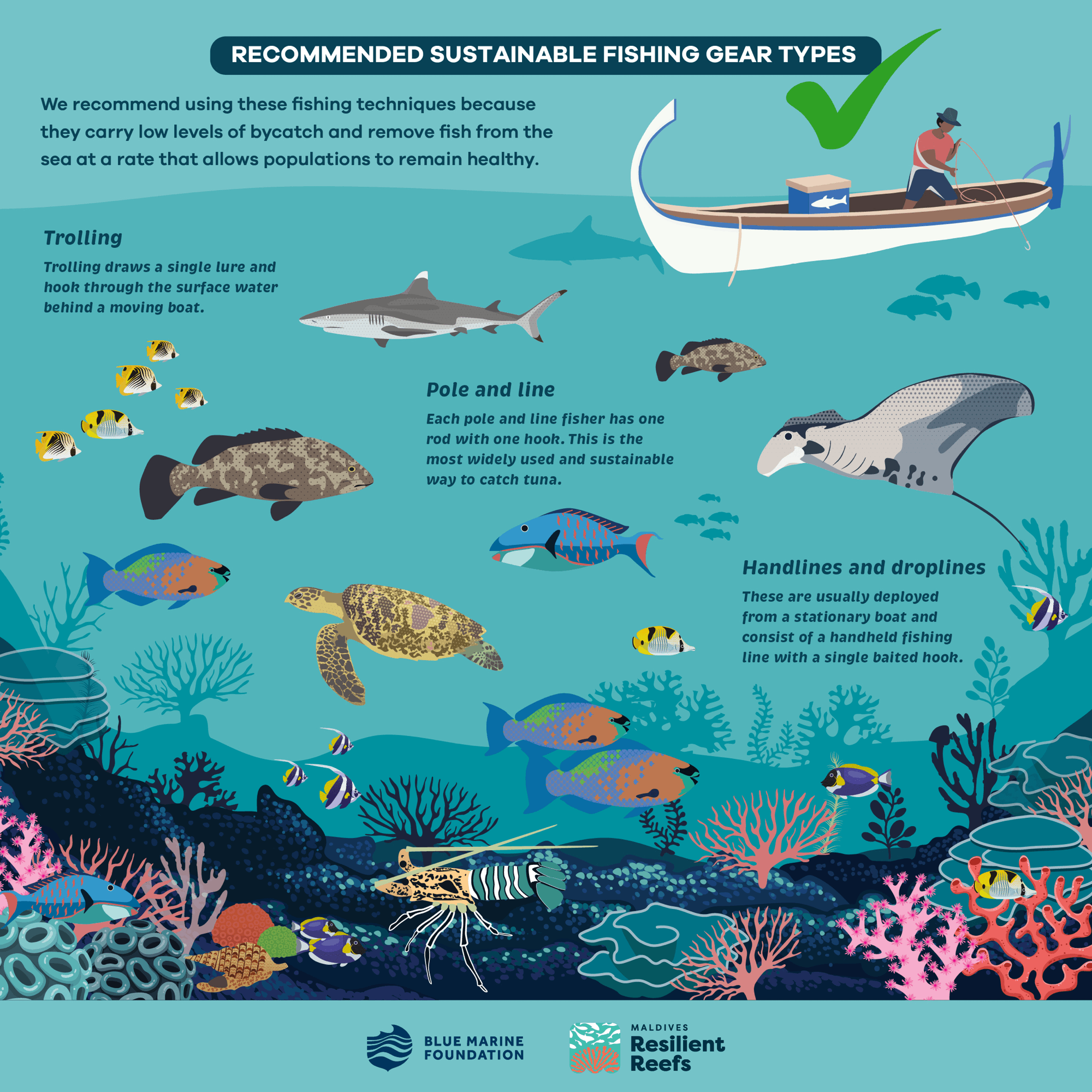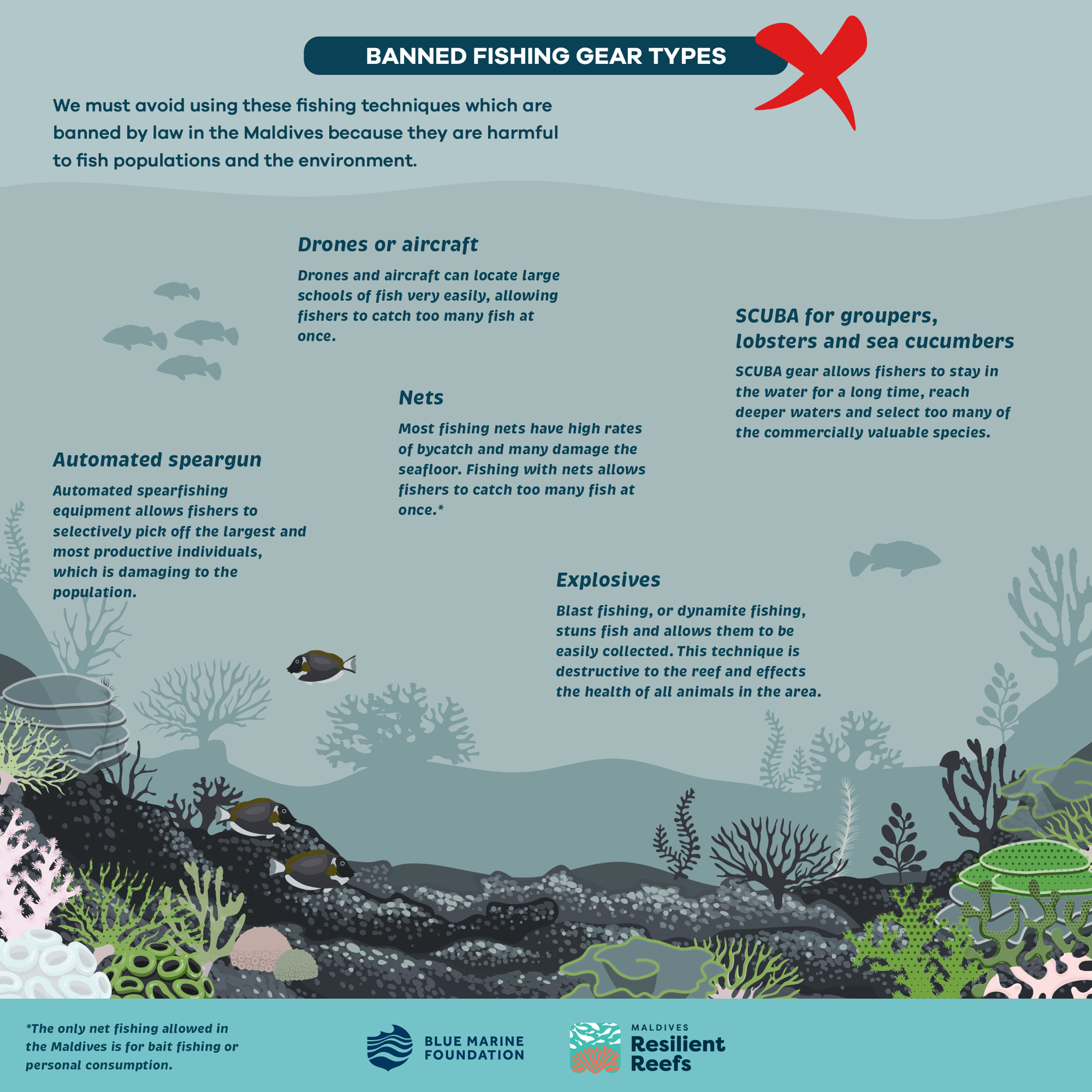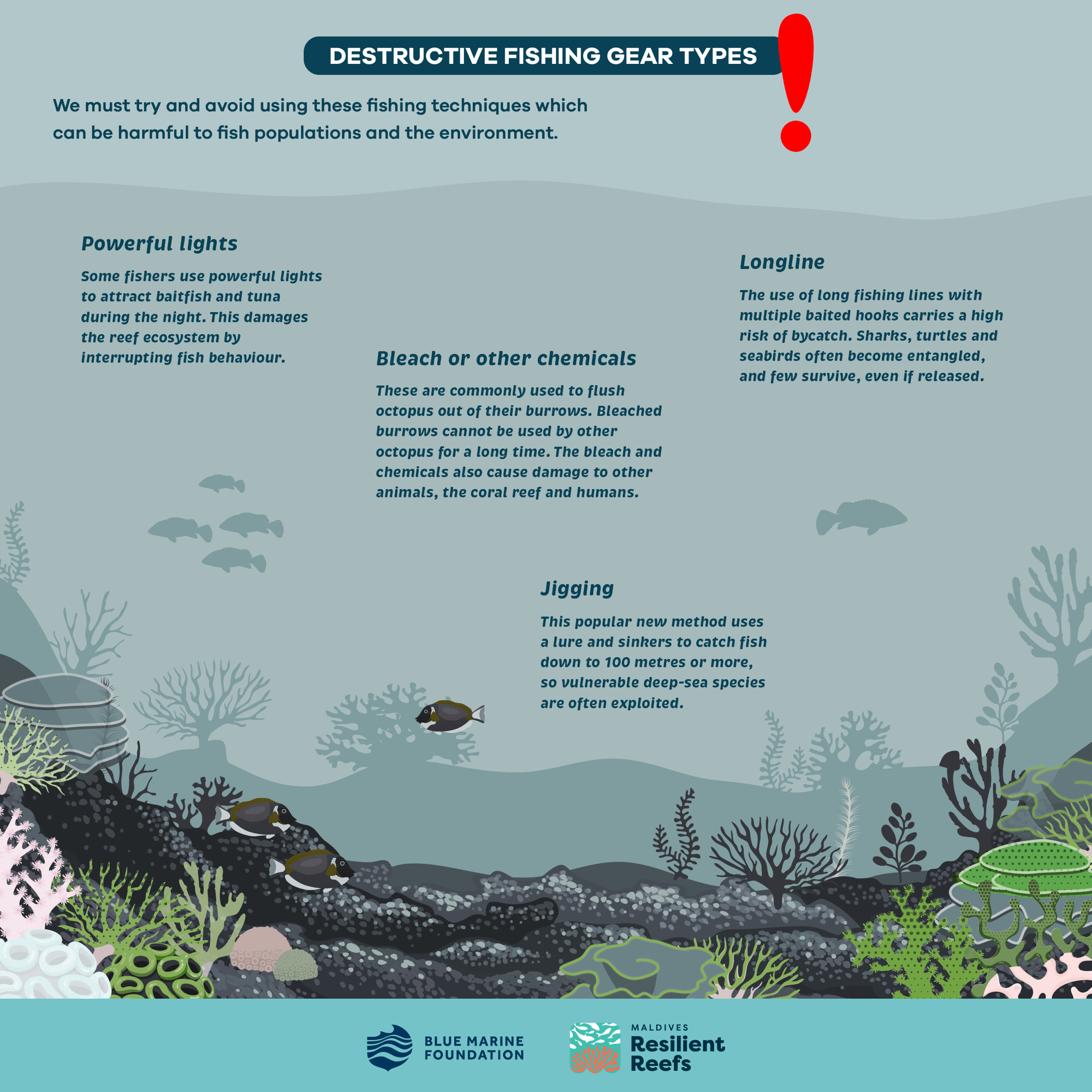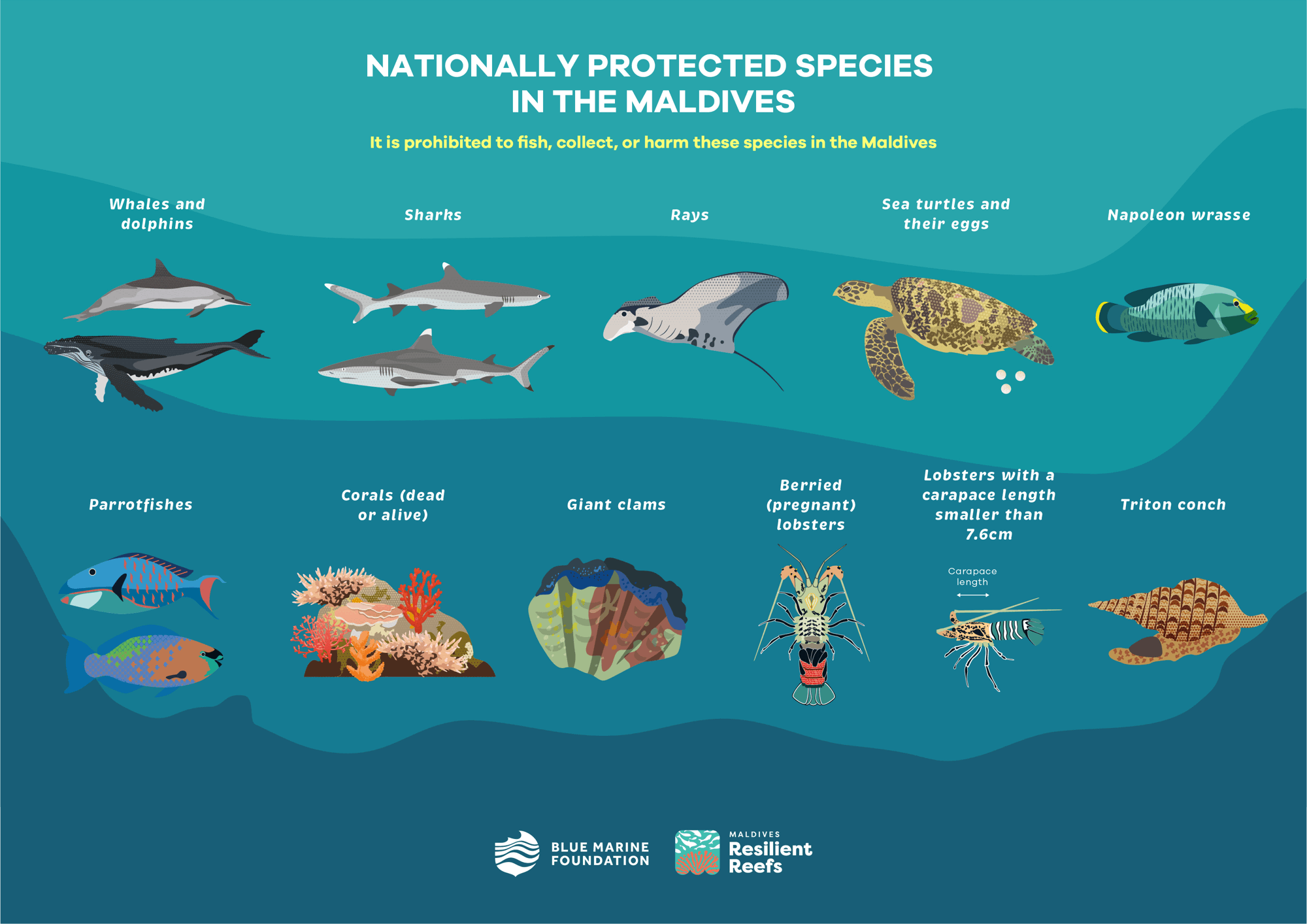Sustainable Fisheries
Fish with care
Fishing in the Maldives has existed for as long as people have and it is integral to our culture. But sadly, overfishing and destructive fishing has also occurred in the Maldives for certain types of fisheries. We must learn from past mistakes so that we don’t repeat them.
Watch this video to learn about the impacts of overfishing and how to spot it.

Examples of overfishing
in the Maldives
Sea cucumbers began being collected for export in the 1980s. In just a few years, the valuable species of sea cucumber disappeared from shallow reefs. Fishers must now dive several meters to find them, using more effort, and more advanced equipment, which is an indicator of overfishing.
The Maldivian giant clam fishery started in the early 1990s and closed less than a year later. Fishers could no longer collect enough to make a living from selling clams, which is another indicator of overfishing.
Groupers have been exported to Asia since the 1980s. Today, 70-90% of all groupers caught are immature, which means they have not had the chance to reproduce even once. So, there will be less and less fish as years go by. This is another indicator of overfishing. Groupers remain overfished today, so it is important to learn from the past and stop grouper stocks collapsing completely.
We must all learn to fish with care. Fishing sustainably means minimising harm to our reefs and leaving plenty of fish for future generations of Maldivians to catch.
Now you have learnt how to tackle overfishing, take a closer look at the gear types causing this harm.
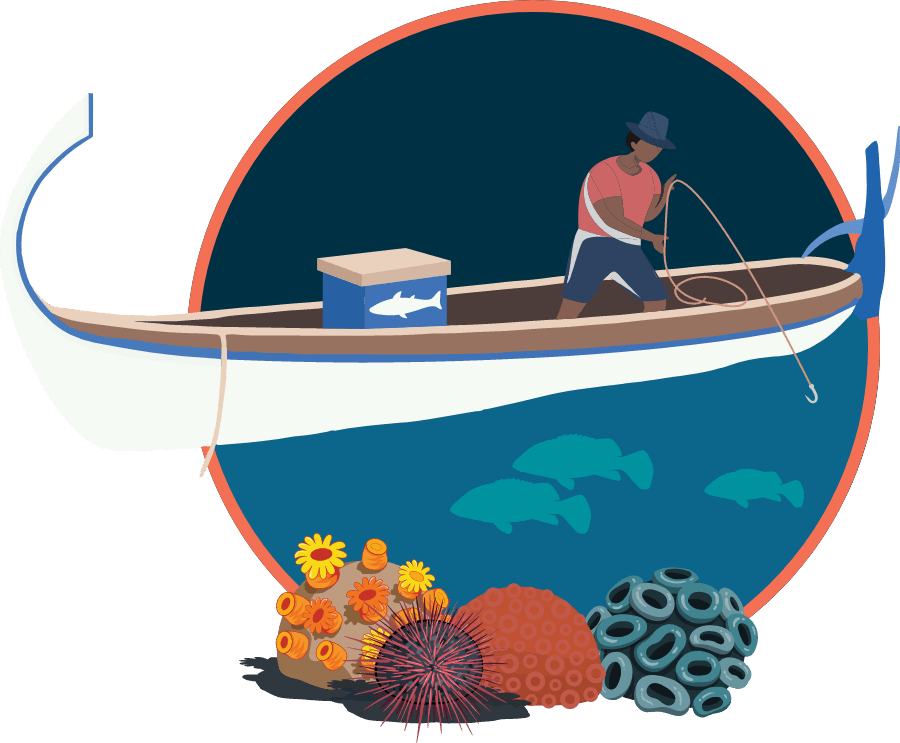
Fishing Gear Types
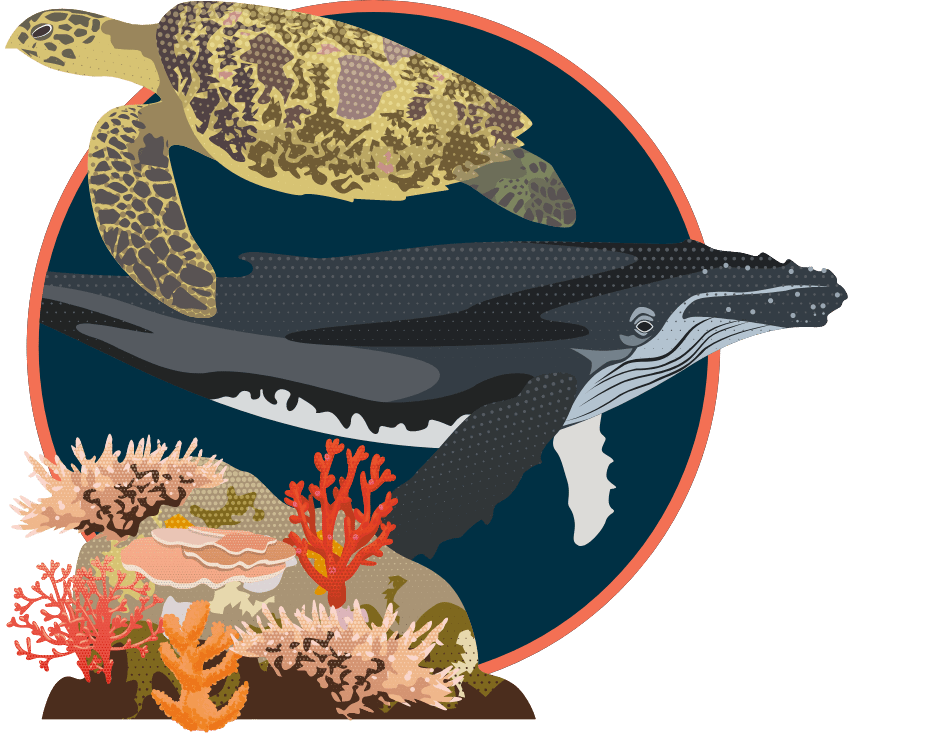
Nationally protected species in the Maldives
You can also watch these videos for more information!
Test your
knowledge
Time to take the quiz!
You must answer all ten questions correctly to earn your prized catch.
